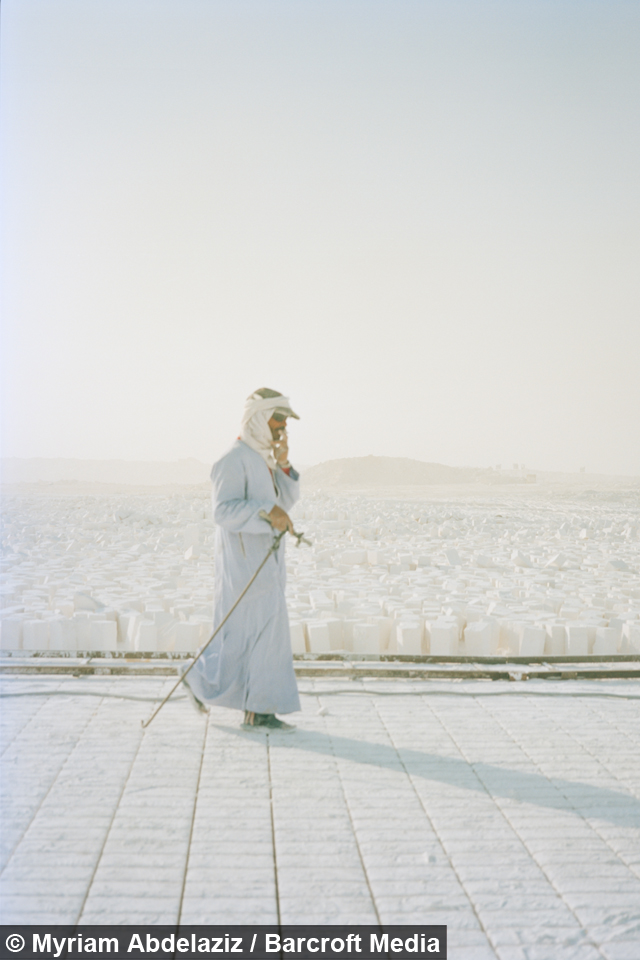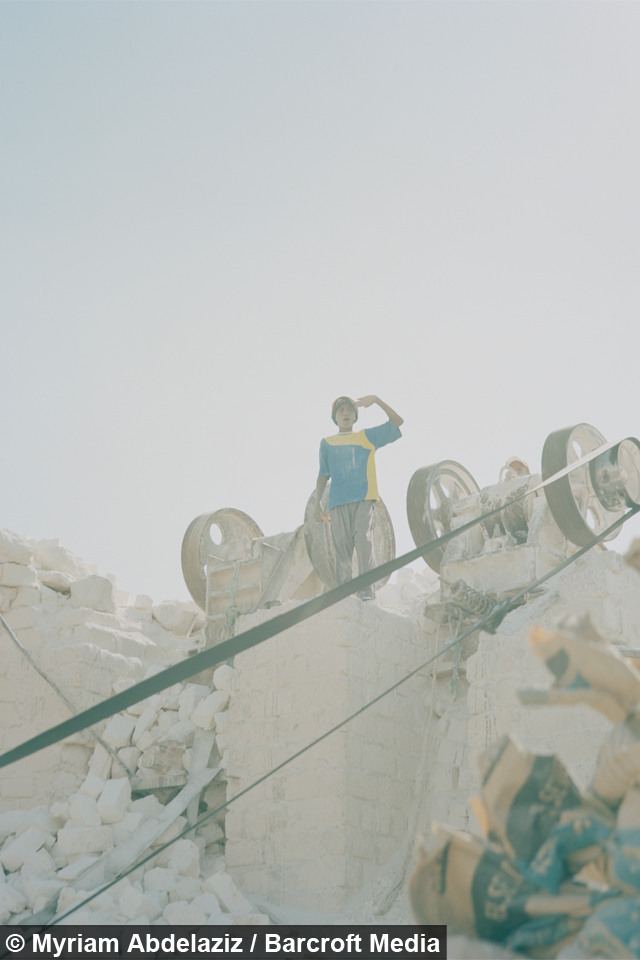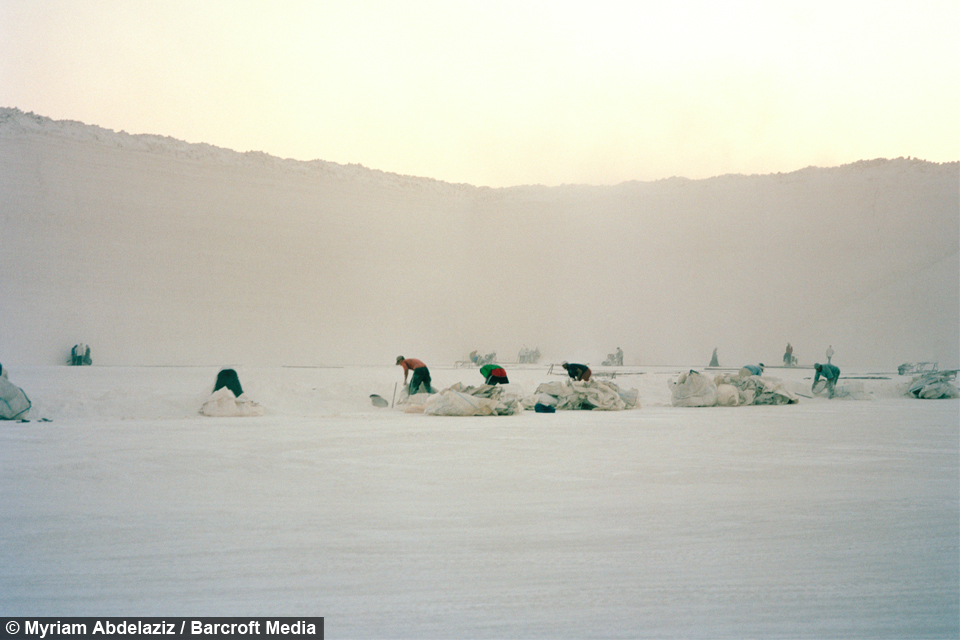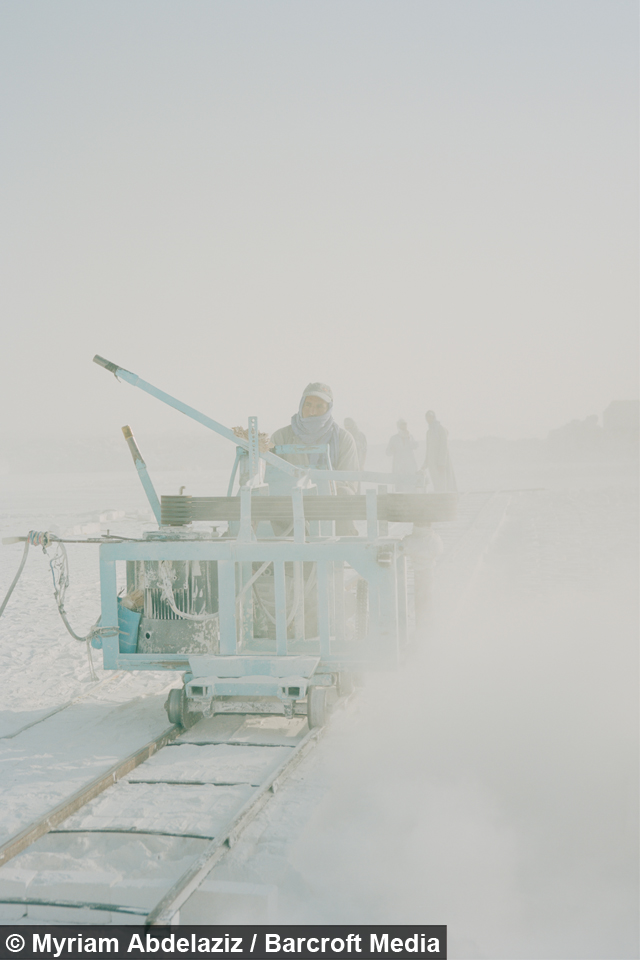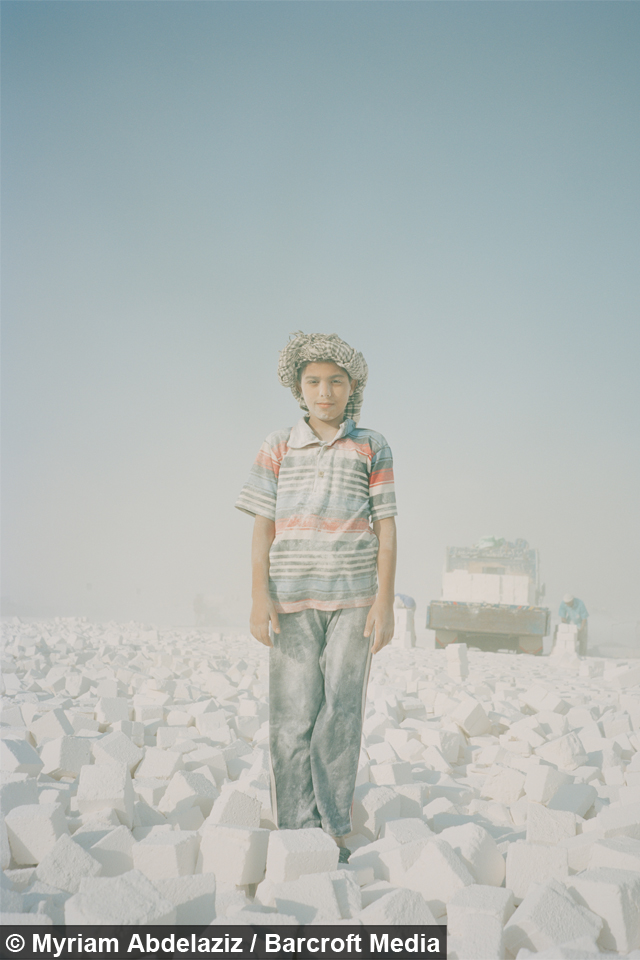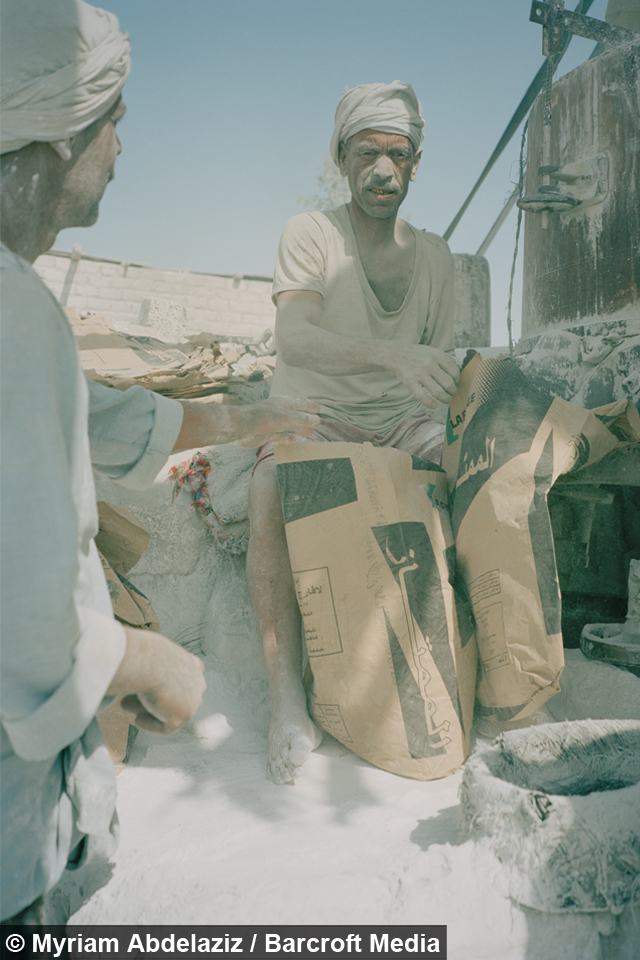Labourers Toil At Limestone Quarries
By Rebecca Lewis @RebeccaSLewis
Scroll down for the full story
Children as young as ten toil in limestone quarries in southern Egypt, which are just a few hundreds miles from Cairo.
The bleary-eyed children, wearing protective eye-wear on their foreheads, work from sunrise until noon when the sun gets too high and the heat becomes unbearable.
And for their families, the $10 (£6) or $15 (£9.50) dollars a day – a considerably high wage for the children - keeps them from destitution.
Myriam Abdelaziz’s ‘Menya’s Kids’ documents the harrowing and illegal practise of child workers in the unnamed quarries of southern Egypt.
The dangerous work sees the young boys fix rudimentary machines with exposed live wires and sharp blades, hauling heavy bricks of limestone onto trucks and collecting the dust that swirls in the air and infiltrates their lungs.
The city of Menya is home to 350 quarries, where 20,000 boys and men undertake back-breaking and dangerous work.
Gaining access to the quarries took months and upon arrival, Myriam found many of the children were told to hide from her camera.
The 38-year-old photographer from Cairo said: “The quarry owners understand that its not very good publicity for them. They are benefitting from those kids and they don’t want to give it up.”
But for the children, many of whom have no form of schooling, the few dollars they receive are invaluable for their parents.
And for many working in the quarries has become a fact of life.
Myriam said: “They don’t see themselves as children anymore, they see themselves as adults because they have been working for so long.”
Unsurprisingly, the work is difficult and dangerous.
Myriam said: “The machinery is old. The children told me some die young, others lose their hand or arm or leg.”
Her pictures are indicative of a wider problem in the nation.
According to the charity Plan, 79 per cent of boys from the age of five to 17 are in work, for girls the figure is 21 per cent.
The problem has worsened since the revolution in 2011, according to Myriam.
